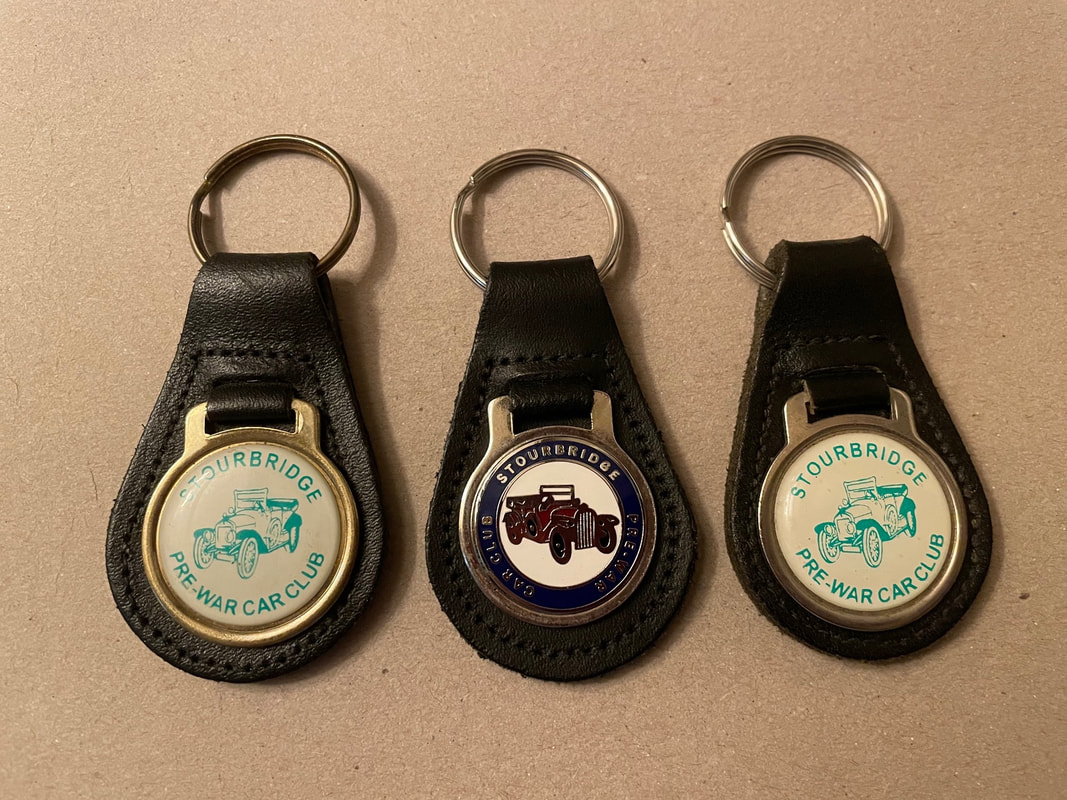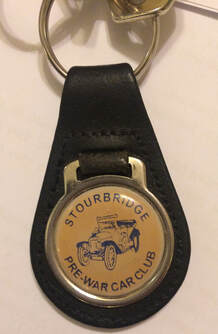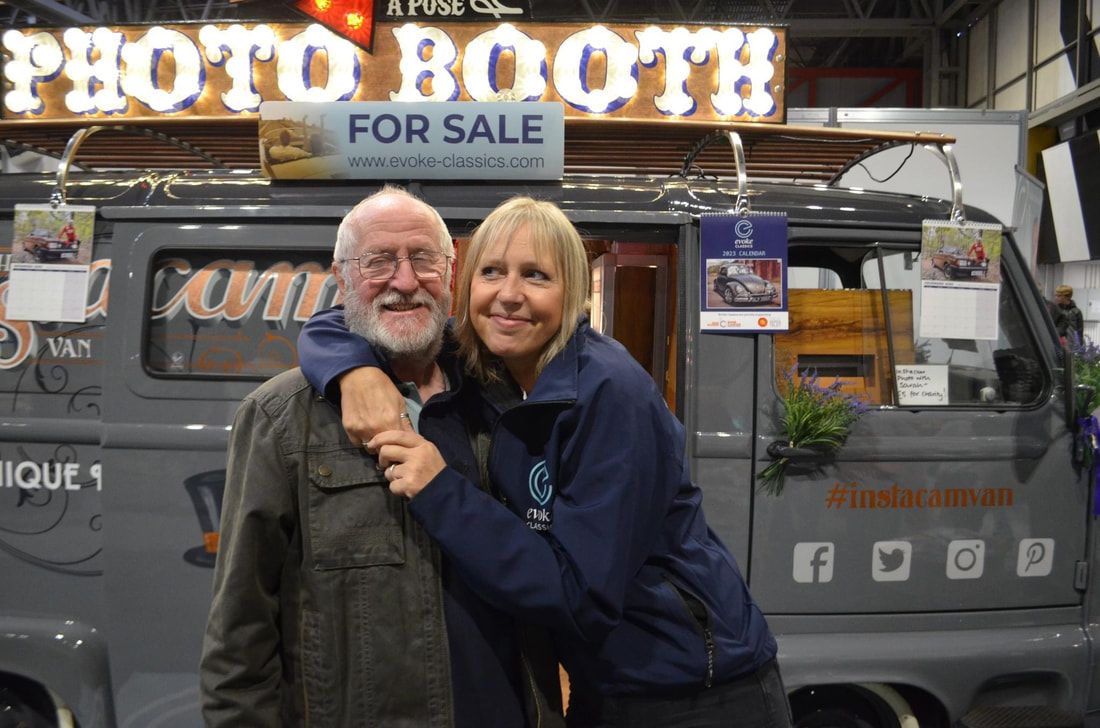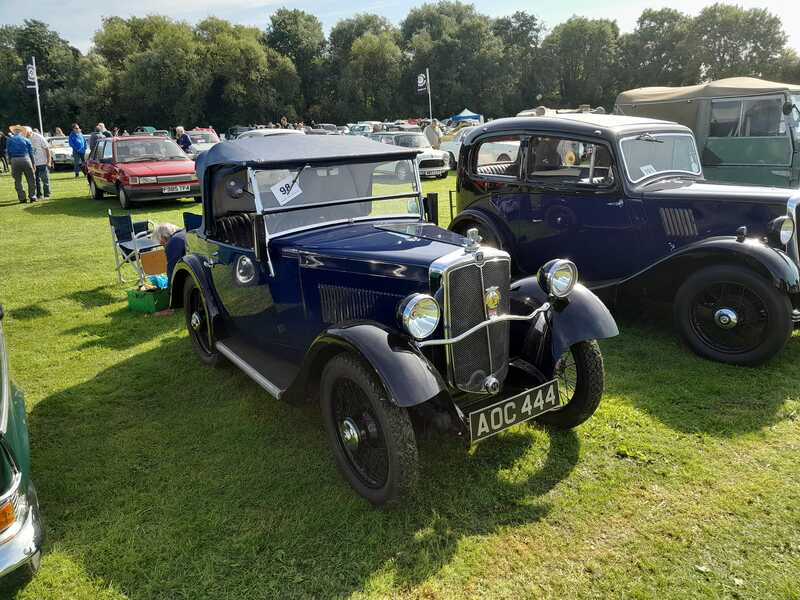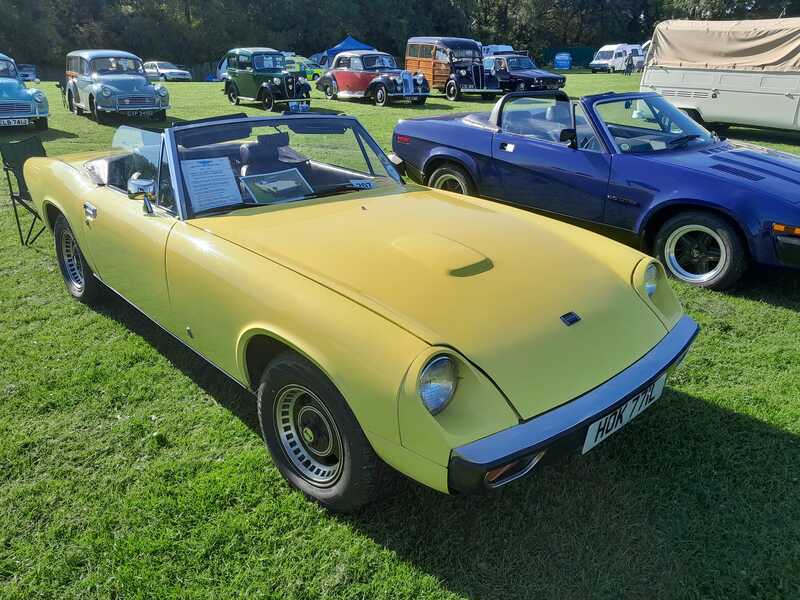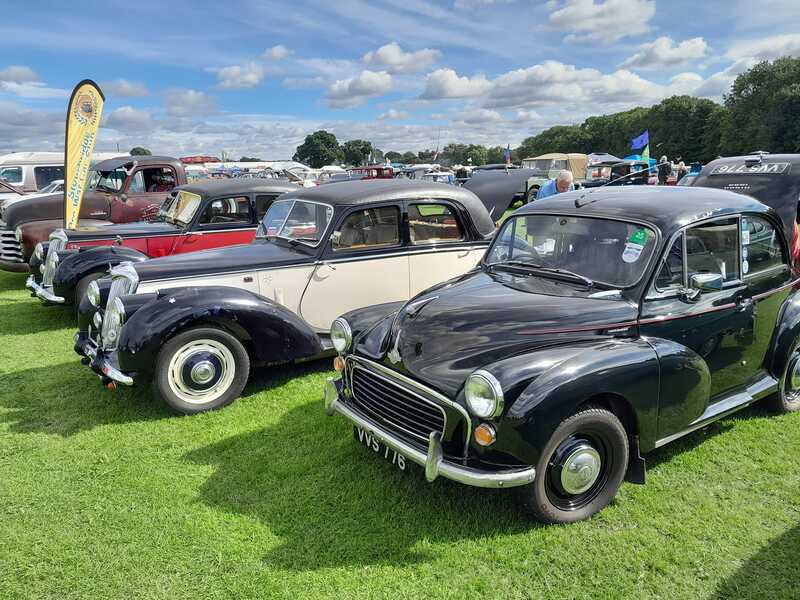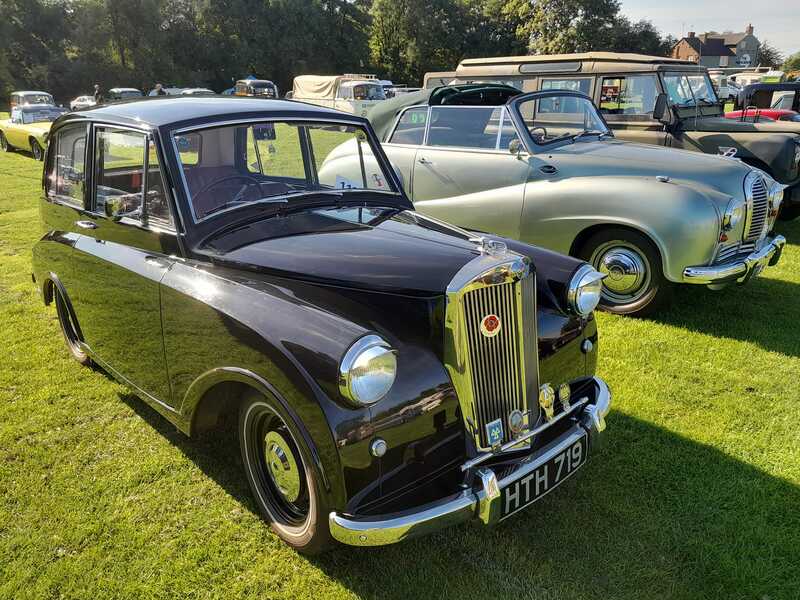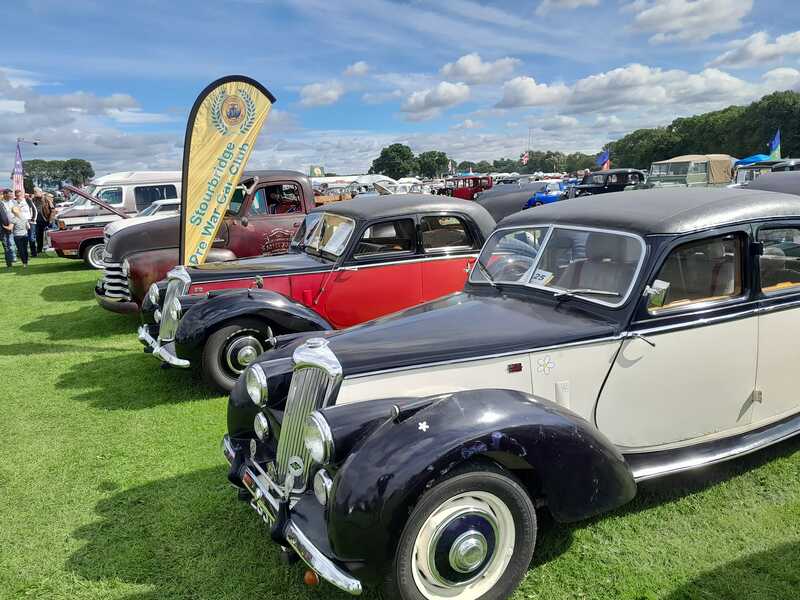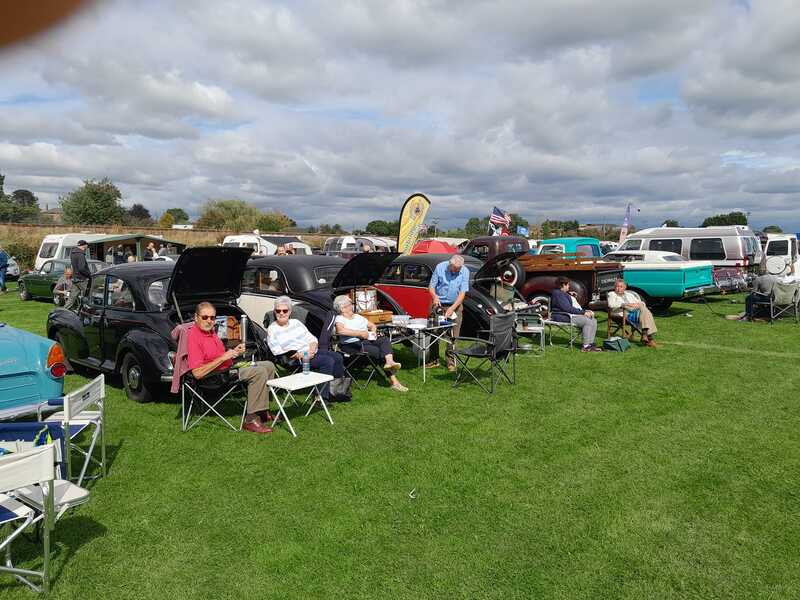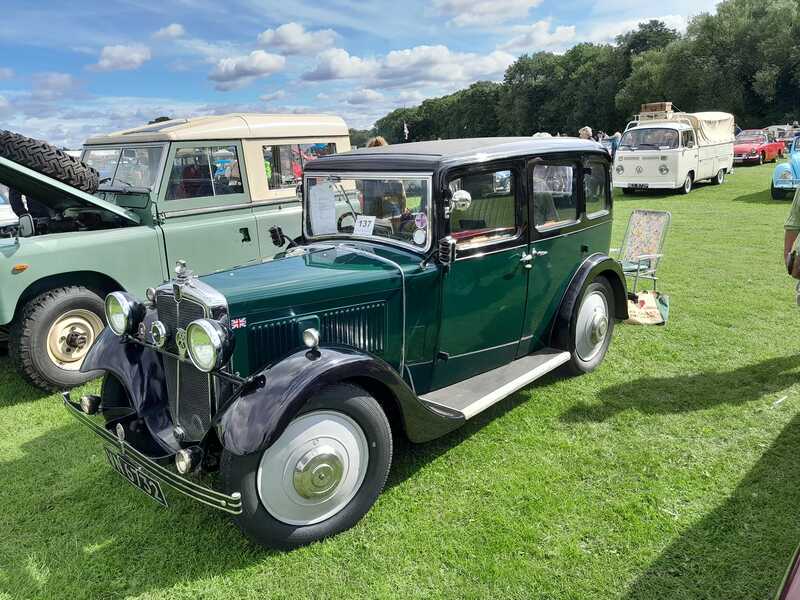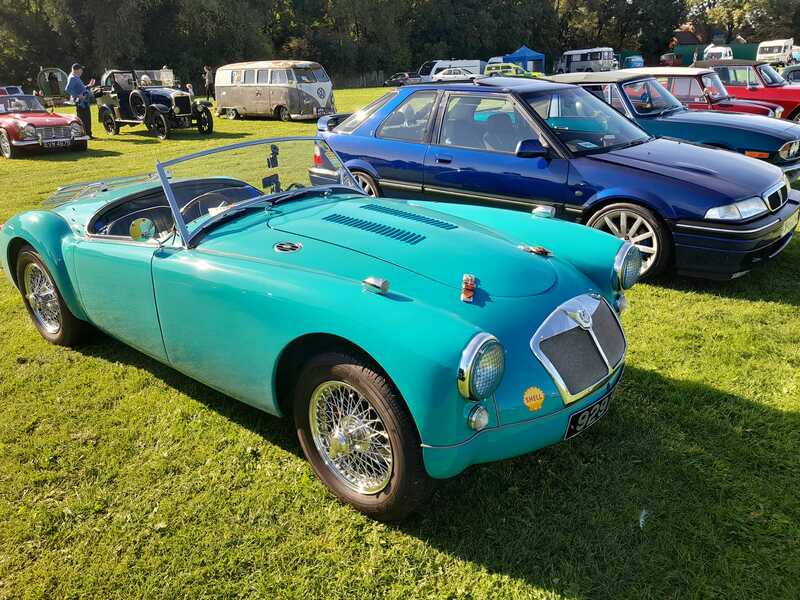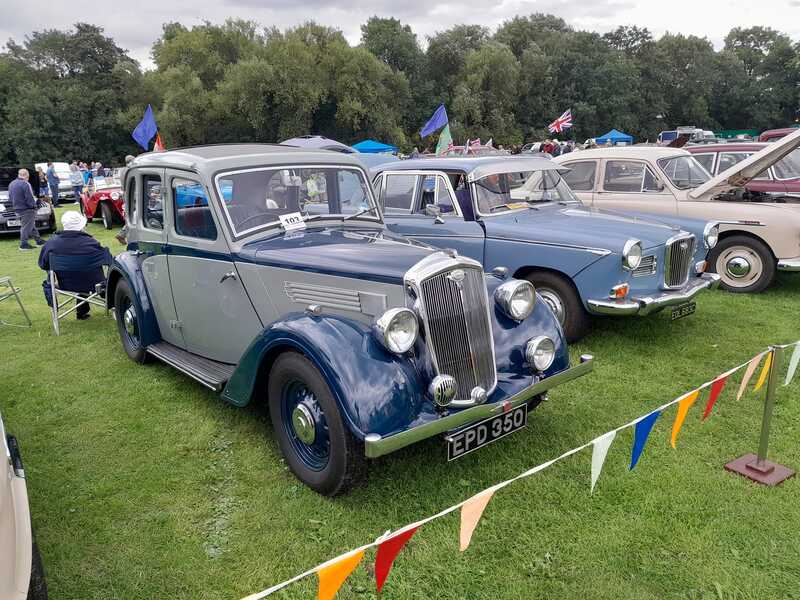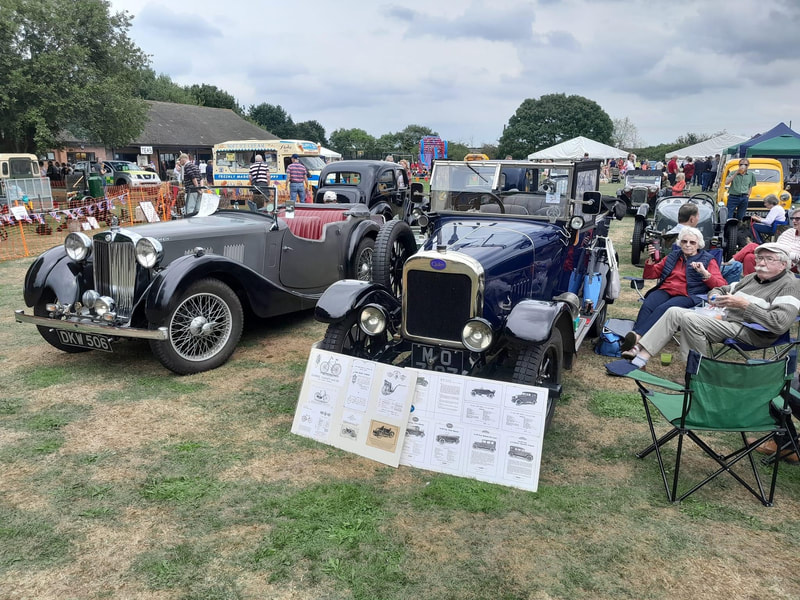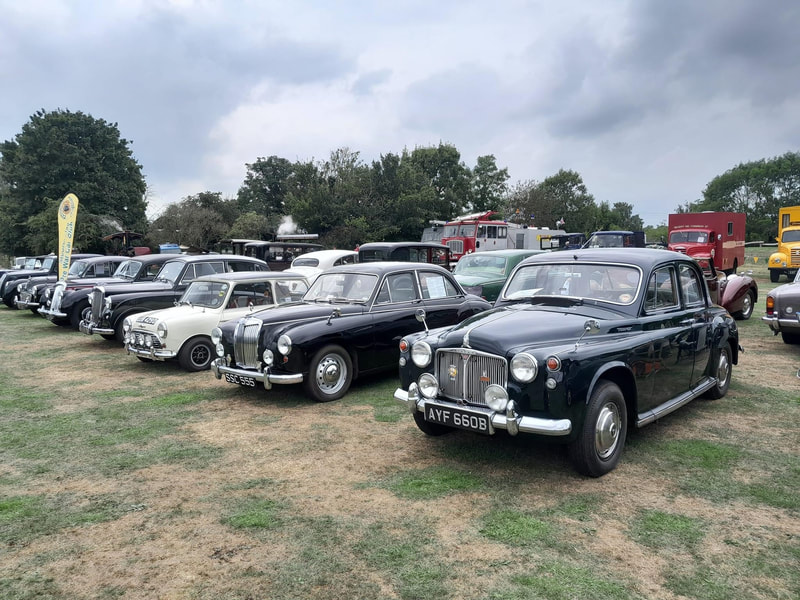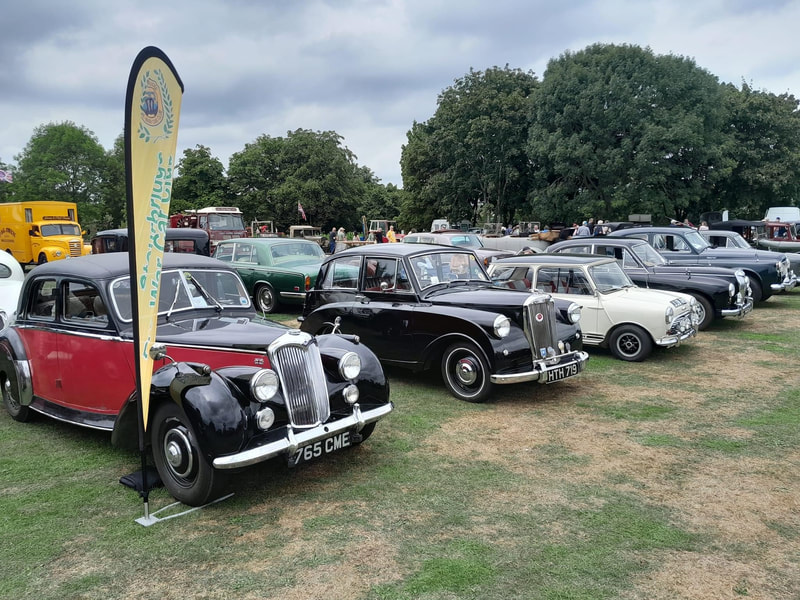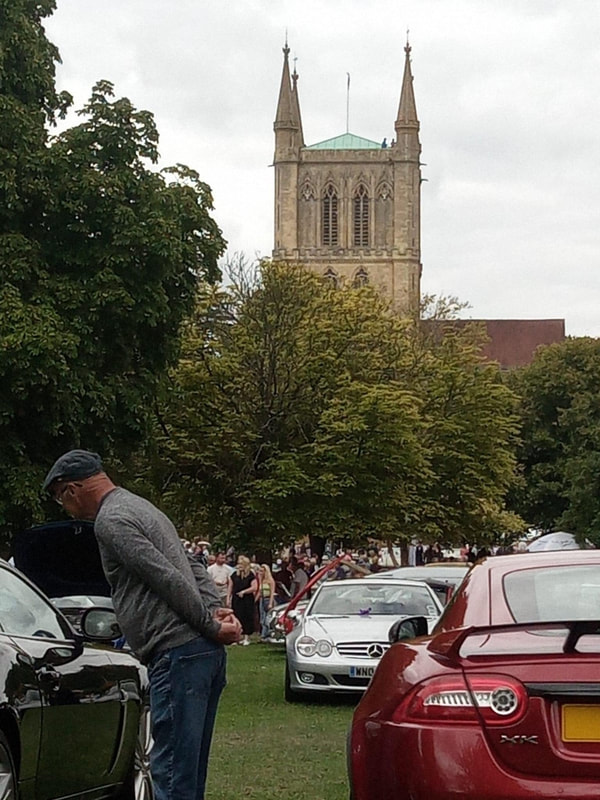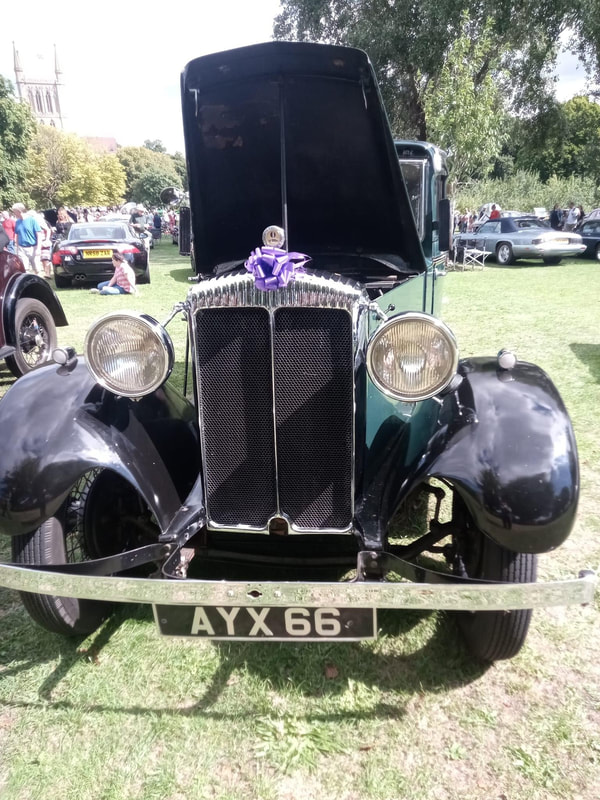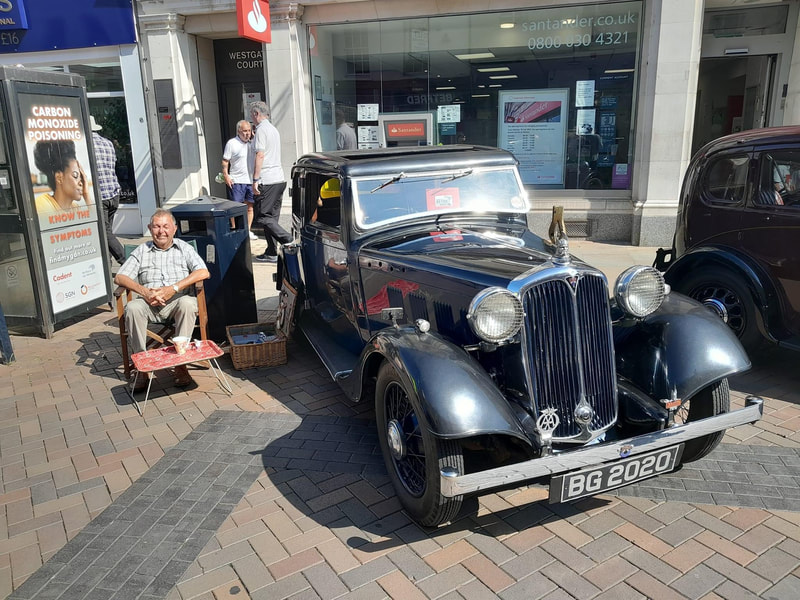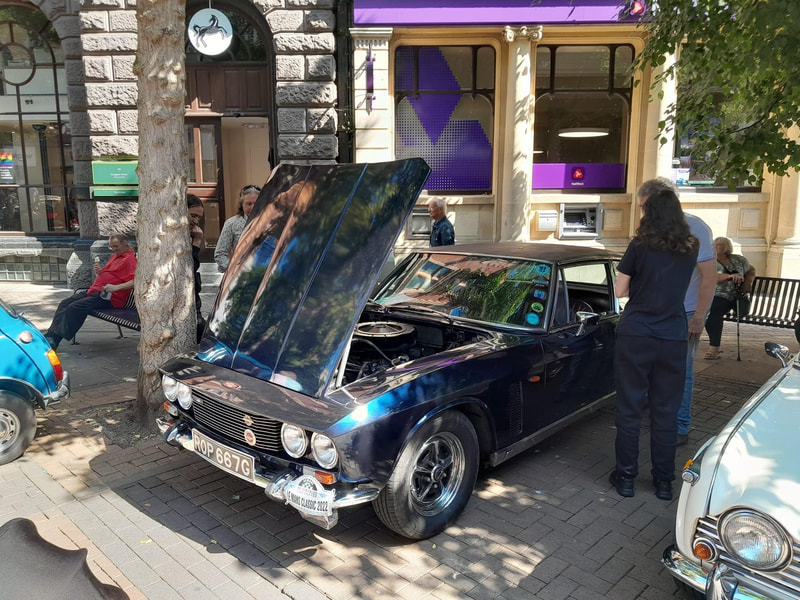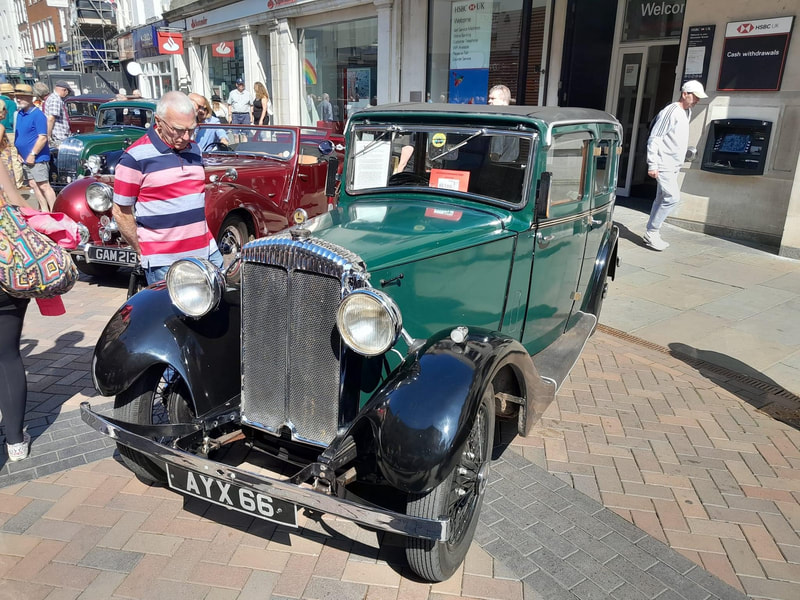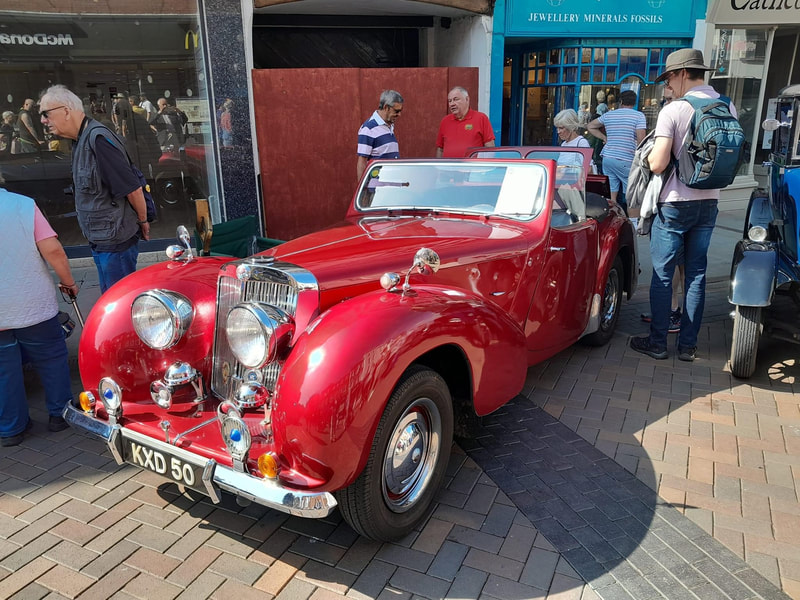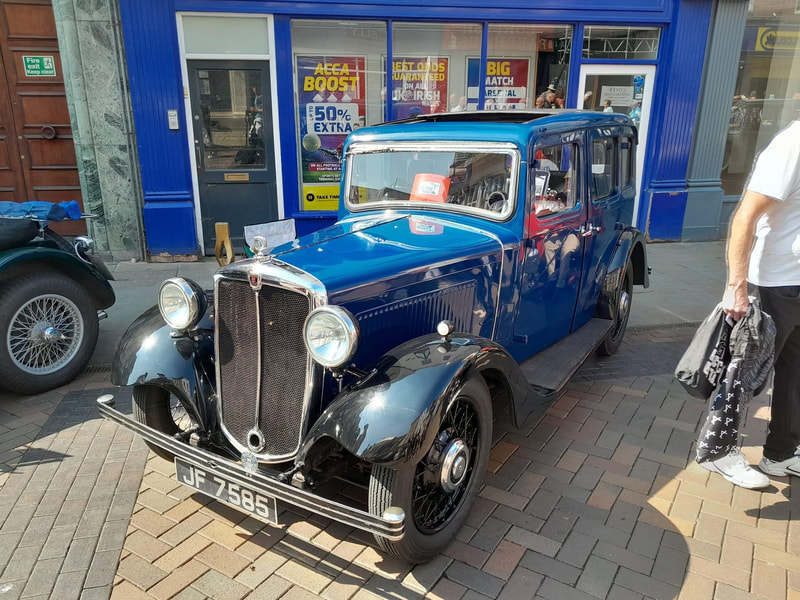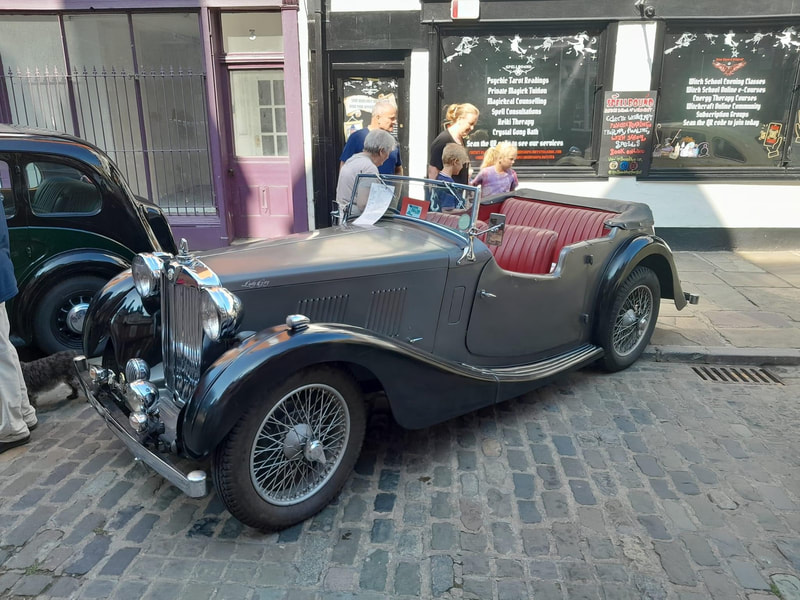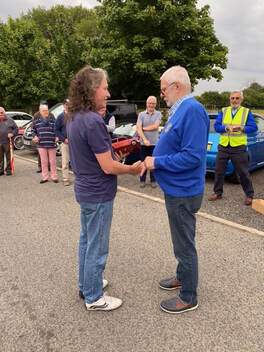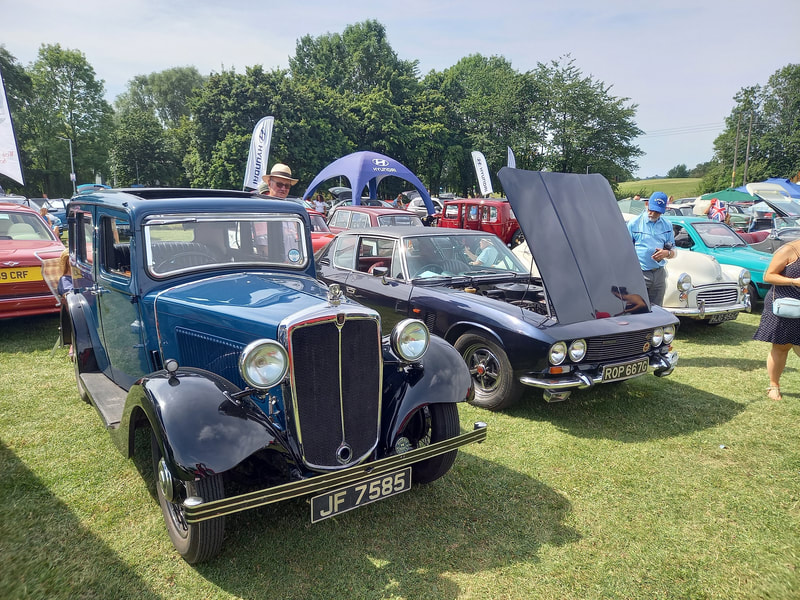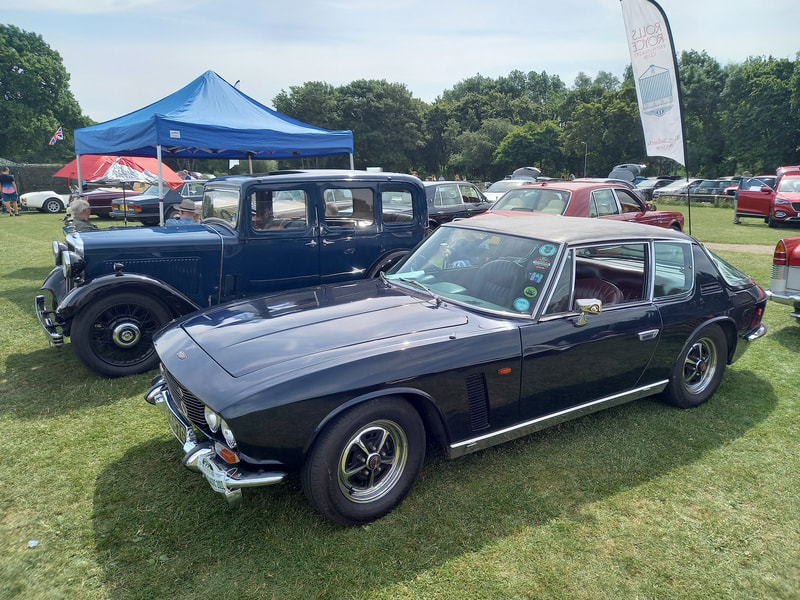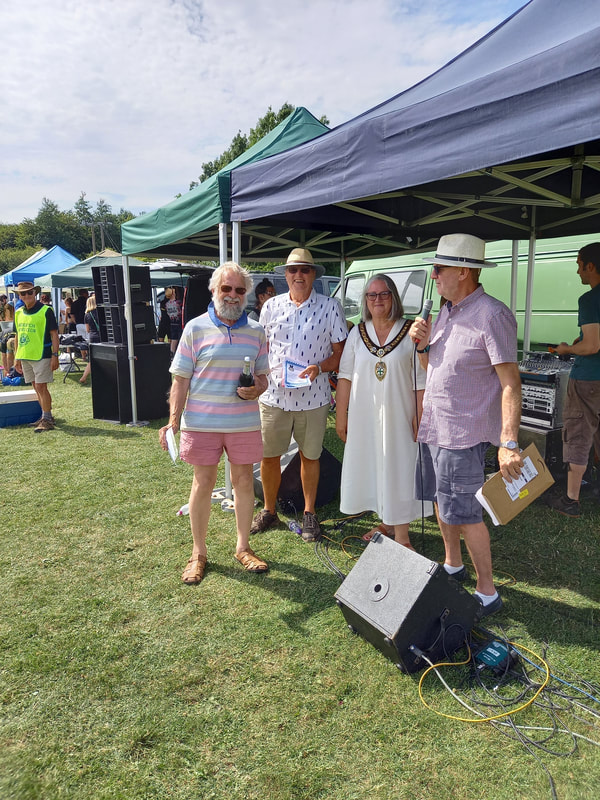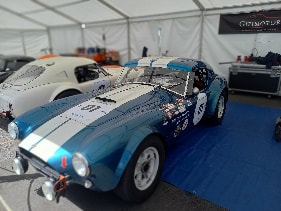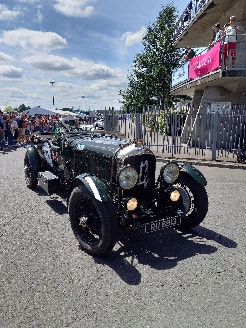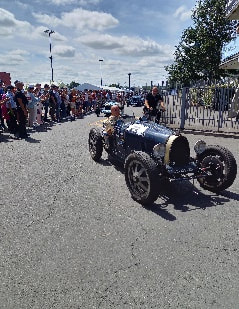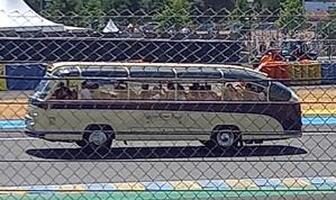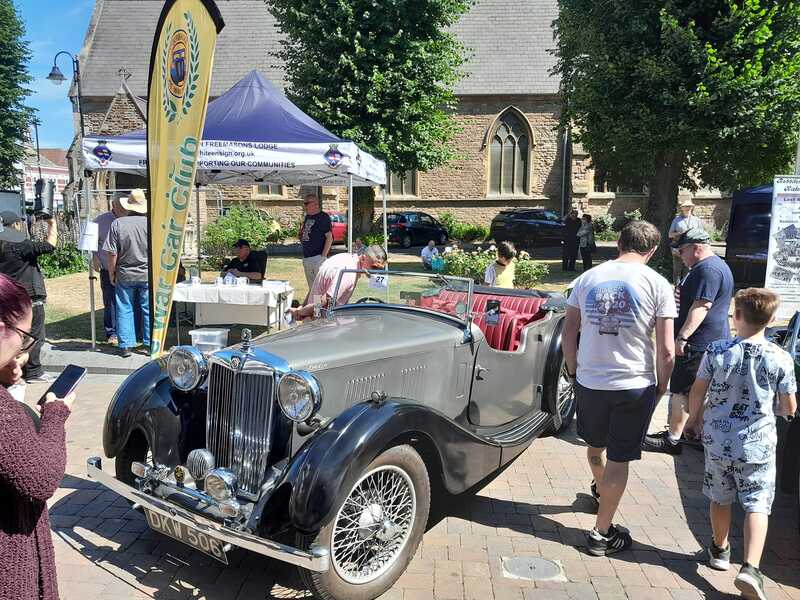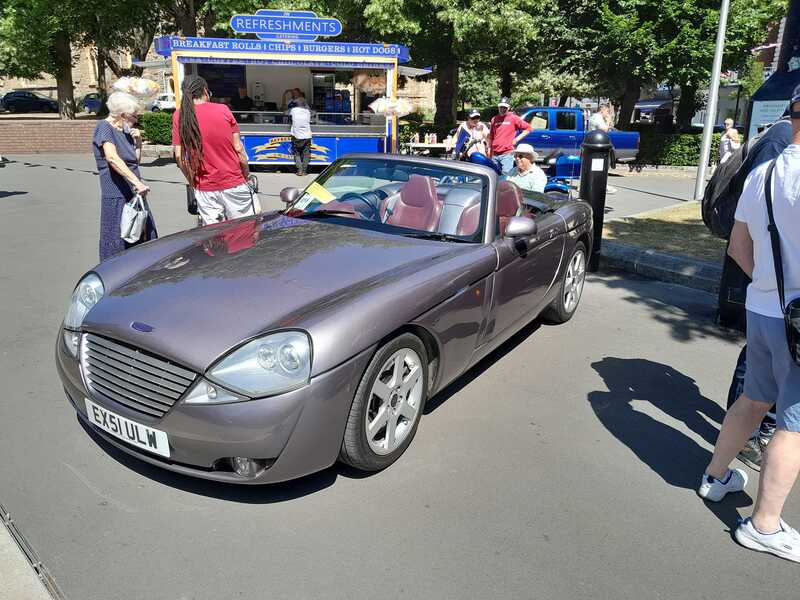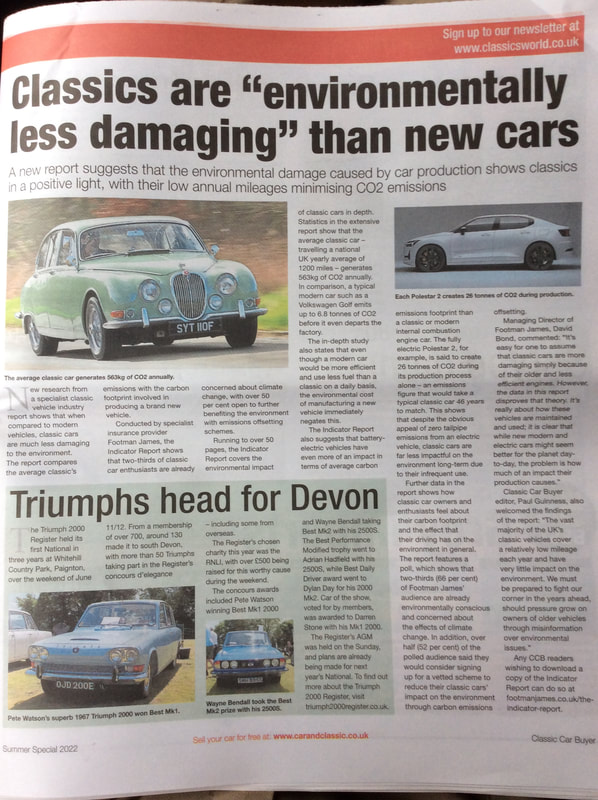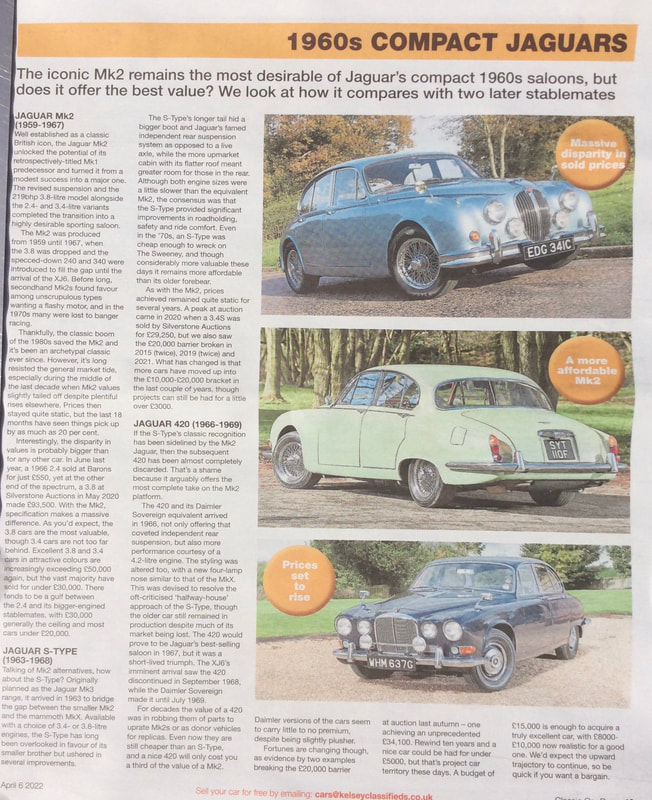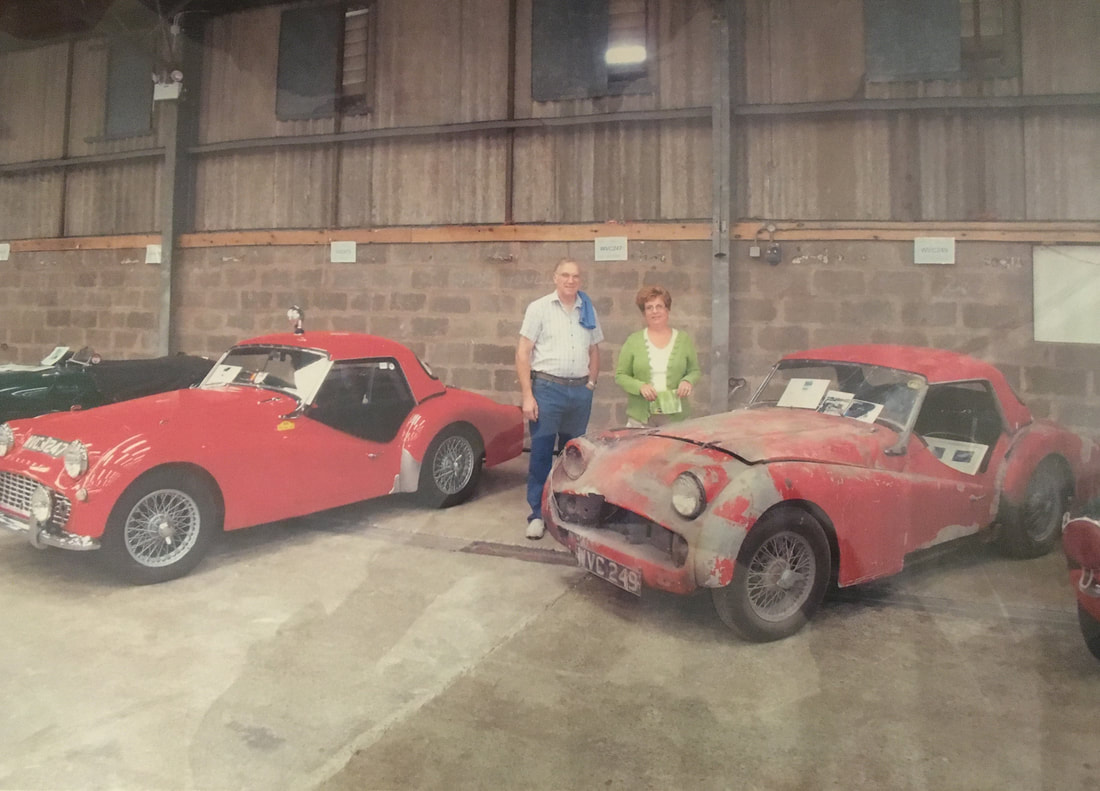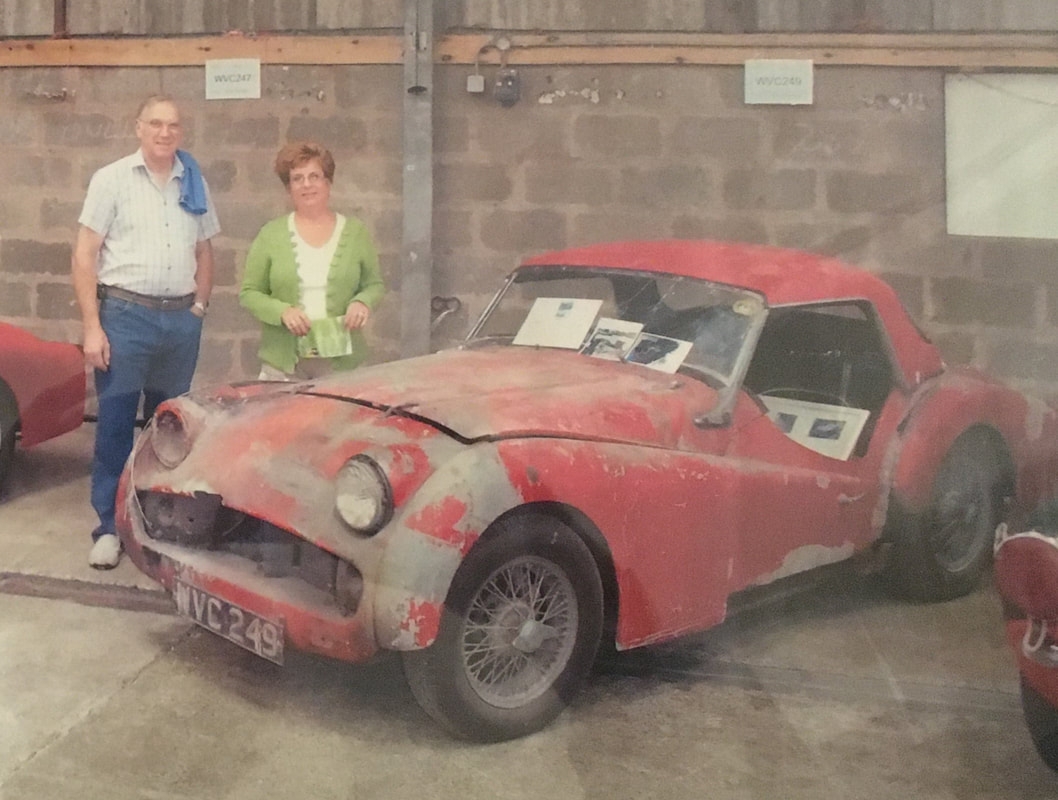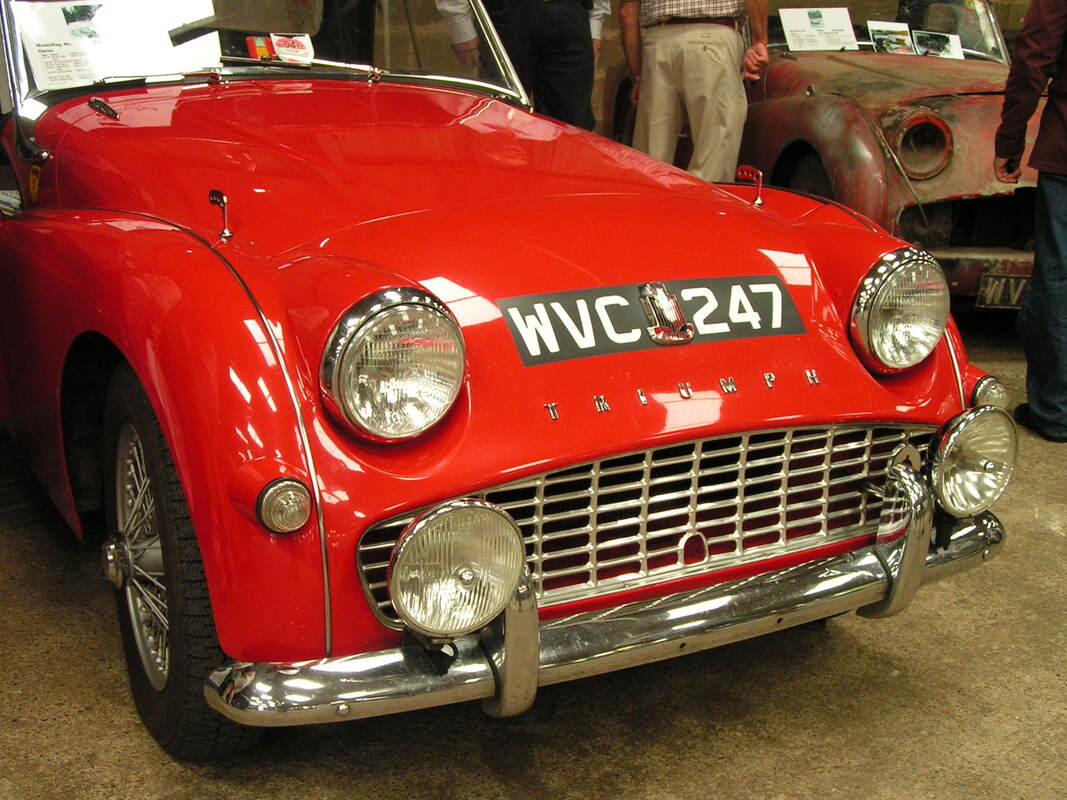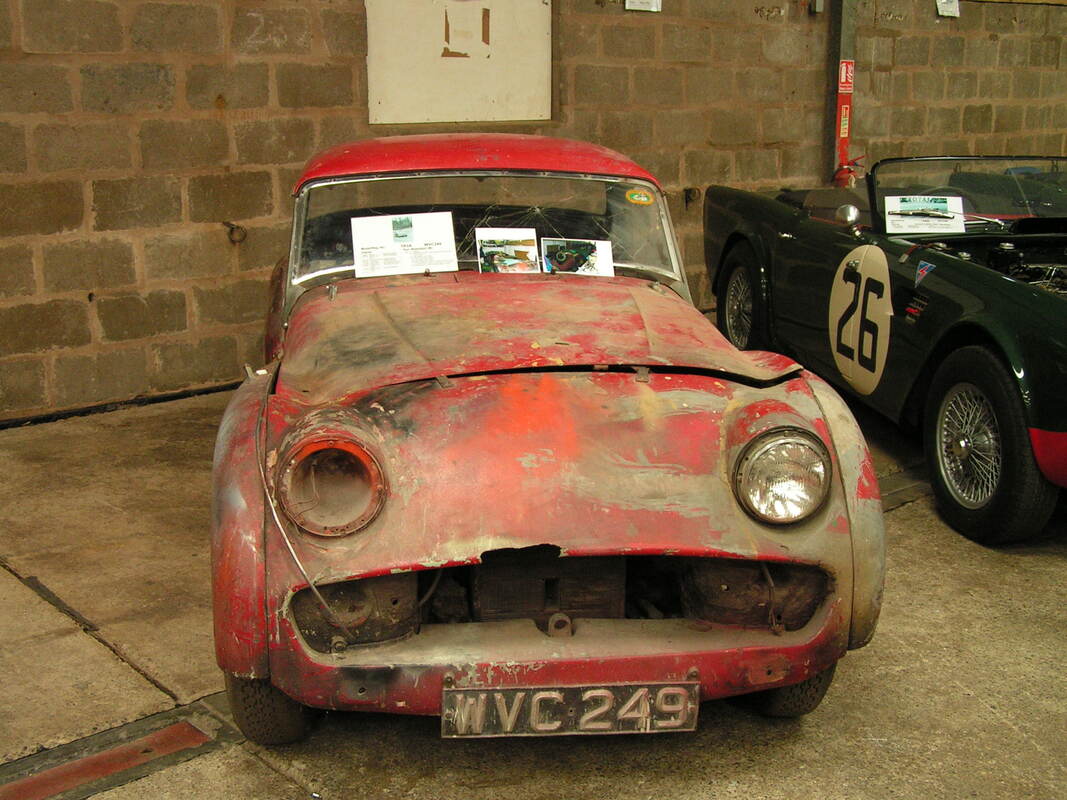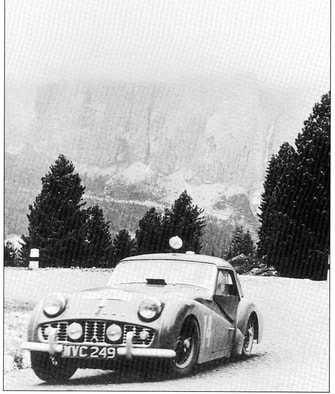Club Page 2022
Members in the News
Thank You Note from Frazer Scott 17th Oct
Hi,
I just wanted to extend my thanks to all members who attended the garage sales at my late father’s bungalow. We raised enough money to make a sizeable donation to the MS Society.
Kind regards,
Fraser Scott
Hi,
I just wanted to extend my thanks to all members who attended the garage sales at my late father’s bungalow. We raised enough money to make a sizeable donation to the MS Society.
Kind regards,
Fraser Scott
Differing Key Fobs through the ages the picture of three found by Dave Finch recently, Did the Brown come before the Green chronologically?
The News letter Editor went to the NEC do you think we will get a full Report
17th 18th September Stoke Prior Steam Fair Photo's by Howard Whatmough
3rd September Peopleton Autumn Show
Howard Whatmough at Pershore Plum Festival 29th August (from Facebook )
27th August Gloucester Goes Retro photo's Howard Whatmough
Bridgnorth Rotary Evening Run Wednesday 27th July
Kevin won the (one and only) award for the car that the President would most like to drive home in
Photo Helen Boorman & John Vickers
The Arrow Valley show organised by the Redditch Lions. John Bates got the award for best coupe/ convertible for the MGVA, and Chris Lees won best of show with his Morris 8. Both received a bottle of bubbly.
New Editor of SPWCC Newsletter
|
Our new Newsletter Editor, Steve Butler has released his first Issue August 2022 which has been circulated.
Great Job Steve and great start to long career in SPWCC Editor Steve Butler has agreed and been voted to role of Editor to monthly Newsletter. Well Done Steve and look forward to seeing the results of your effort |
LeMans Classic 2022.
Many of you would be aware that recently I went to the LeMans Classic 24hr event, this had been a long wait, as it was originally booked for 2020, and had been postponed twice. The trip was organised by the Jensen Owners Club and the plan was to catch the Thursday morning ferry from Portsmouth to Caen, stay over night at Alencon, then down to the circuit on Friday, where we would be camping for two nights. We would then make our way back to Caen for Sunday evening, ready to catch the early ferry on Monday morning.
Not much work on the Jensen beforehand, just remedy a drip from the otter switch on the radiator, check all fluids, top up the lever arm shock absorbers and ready for the off. The big fluid check of fuel worked out to be £123 for the first fill up, but the tank was virtually empty. The boot was filled with the usual spares, hoses, ignition bits etc, tools, camping kit including the all important kettle, and a change of underwear.
We set off, my eldest son Matt and I, at midday on the Wednesday for a gentle drive to Portsmouth, with Matt doing the driving and getting used to the car, as he hadn’t really driven it before. I don’t know who was more nervous, him driving it or me as a passenger, but he soon got used to it, even though it is a completely different driving experience to his modern. He soon got used to the power delivery, and as a petrol head did extend the car’s legs several times to relieve the boredom of motorway driving.
We arrived at the hotel in Portsmouth just before 3pm after filling up again to ensure we had a good run the next day, checked in and promptly retired to the nearest hostelry for a beer or two and some food. An hour or so later we were joined by Alan and Chris (also SPWCC members) who were doing the trip in their FF. Then off to bed early as we had an 8:15 sail the next morning and had to be at the dock at least 1 hour before sailing. The queue for the ferry was like going to a top class car show, with at least 50% of the cars boarding being classics, and we also met up with other Jensenites on our trip.
We arrived in Caen to rain and an hour to clear customs, with the car getting very warm in the queue, but no dramas, and then we escaped the port to travel just south of Caen on the Autoroute, before exiting and driving down the D658 avoiding tolls, but having a nicer drive down the typical French A roads, to Alencon. We caught up with others at the hotel on the evening, with a good meal and another beer or two.
Up the next morning, first stop Carrefore for beers, food for BBQ and breakfast whist camping, and with another fuel top up off to the campsite within the LeMans circuit. We arrived at the campsite around noon, set up the tents, and then straight off to the circuit as we could hear the cars on the track, out for practice etc. We had passes that let us into the paddocks and the sights to behold were stunning. There was every car you could think of from the 1920s through to the 1990s that had raced at LeMans in their day. Bugattis, Bentleys, C-types, D-types, Gt40s, Cobras, Ferraris just to name a few. We had grandstand tickets which had us at the Dunlop esses at the end of the start/finish straight, which saw quite a number of incidents, and during the afternoon, we caught up with our German and Swiss friends we’d met on our previous trips to Italy, Germany and Switzerland.
The classic is a strange event to describe, there are groups of races that officially start at 16:00 on the Saturday and finish at the same time on Sunday. The first group will be from the ’20 & ‘30s, second group from ‘40s to early ‘50s, and so on up to the early ‘90s, with hour long races in each group. There are different categories in each group too, so you can have 5 litre Cobras racing with 800cc Panhards, which gets quite interesting once the smaller engine cars start to get lapped and in the way of the bigger engine cars, as they are all competing in their own group.
Watching the huge ‘20s Bentleys racing against the tiny Bugattis was fascinating, as the drivers are virtually hanging out of the cars to get around the bends, with the Bugattis dominating in the corners but the Bentleys reeling them back in on the straights. Whereas the 90s Silk Cut Jags, Lolas and Bentley Speed 8s seem not to have to slow down for anything and corner at spectacular speeds, but also go off in spectacular fashion when they get it wrong. There is also the chance to drive your car around the track, 3 laps for about £140, which is tempting, but I was advised not to, as apparently it is not un common for there to be accidents where people out drive themselves and crash into other innocent drivers, only to find out they’re not insured. A cheaper alternative is to go around on one of the many fantastic vintage buses that were there, some with great streamlined bodywork, that would look good in an art gallery.
Besides the racing, there is parking within the circuit for the many car clubs attending, which turns out to be a great car show in its own right and many other things going on including vintage aircraft fly pasts. The main racing goes on through the night, with the same format with car age groups, and is really interesting watching these cars fighting it out in the dark, noting the brake discs form the GT40s were the ones that glowed more than the others. There were some interesting incidents, with cars coming together, simply getting it wrong or having mechanical failures as is all part and parcel of racing, even with these multi-million pound classics. The biggest casualty though has to be the unique Ferrari 250 GTO Breadvan that got it wrong just after the Dunlop esses. This car is valued at £30m and the driver managed to take out the whole righthand side of the car, including ripping the door off. One thing you cannot take in is the noise of these cars, they are all so different, with some of them extremely loud. But watching D-types, Gt40s and Cobras battling it out is a wonderous sight, and we are lucky that the owners of these cars allow us to experience them as they were originally intended, rather than being sat in a garage or museum as static displays.
Sunday morning we decamped and packed the car up so we could leave the track after the racing to head up to Caen for our overnight stay, final meal with old friends and new in readiness for the early morning ferry on Monday. We hoofed it back to Caen on the Autoroute as we had the meal booked and it was a 2hr jaunt, uneventful, except for the peage, where it wouldn’t accept our ticket for payment, which resulted in an impatient queue behind us. Up early the next day for the ferry, and goodbyes to some, who were continuing for a few days in France, with the ferry queue once again looking like a car show, including some of the racers we’d seen over the weekend, on trailers.
Getting off the ferry at Portsmouth took us around an hour to get through customs, which resulted in Alan & Chris having an issue with their FF, that died on them. It later turned out to be the electronic ignition failing, so had to be recovered home, which actually saved them more than £100 in fuel!!
Once again a fantastic trip having fun with new friends and old, the car performing well, doing exactly what it was designed to do 55 years ago.
The answer to the question you are all asking is, we did 560 miles, and spent £360 in fuel at an average of 15MPG, which worked out at 68p per mile.
Kev Birch.
Sorry I couldn't incorporate the Photos into text as Kevin wanted Chris
Many of you would be aware that recently I went to the LeMans Classic 24hr event, this had been a long wait, as it was originally booked for 2020, and had been postponed twice. The trip was organised by the Jensen Owners Club and the plan was to catch the Thursday morning ferry from Portsmouth to Caen, stay over night at Alencon, then down to the circuit on Friday, where we would be camping for two nights. We would then make our way back to Caen for Sunday evening, ready to catch the early ferry on Monday morning.
Not much work on the Jensen beforehand, just remedy a drip from the otter switch on the radiator, check all fluids, top up the lever arm shock absorbers and ready for the off. The big fluid check of fuel worked out to be £123 for the first fill up, but the tank was virtually empty. The boot was filled with the usual spares, hoses, ignition bits etc, tools, camping kit including the all important kettle, and a change of underwear.
We set off, my eldest son Matt and I, at midday on the Wednesday for a gentle drive to Portsmouth, with Matt doing the driving and getting used to the car, as he hadn’t really driven it before. I don’t know who was more nervous, him driving it or me as a passenger, but he soon got used to it, even though it is a completely different driving experience to his modern. He soon got used to the power delivery, and as a petrol head did extend the car’s legs several times to relieve the boredom of motorway driving.
We arrived at the hotel in Portsmouth just before 3pm after filling up again to ensure we had a good run the next day, checked in and promptly retired to the nearest hostelry for a beer or two and some food. An hour or so later we were joined by Alan and Chris (also SPWCC members) who were doing the trip in their FF. Then off to bed early as we had an 8:15 sail the next morning and had to be at the dock at least 1 hour before sailing. The queue for the ferry was like going to a top class car show, with at least 50% of the cars boarding being classics, and we also met up with other Jensenites on our trip.
We arrived in Caen to rain and an hour to clear customs, with the car getting very warm in the queue, but no dramas, and then we escaped the port to travel just south of Caen on the Autoroute, before exiting and driving down the D658 avoiding tolls, but having a nicer drive down the typical French A roads, to Alencon. We caught up with others at the hotel on the evening, with a good meal and another beer or two.
Up the next morning, first stop Carrefore for beers, food for BBQ and breakfast whist camping, and with another fuel top up off to the campsite within the LeMans circuit. We arrived at the campsite around noon, set up the tents, and then straight off to the circuit as we could hear the cars on the track, out for practice etc. We had passes that let us into the paddocks and the sights to behold were stunning. There was every car you could think of from the 1920s through to the 1990s that had raced at LeMans in their day. Bugattis, Bentleys, C-types, D-types, Gt40s, Cobras, Ferraris just to name a few. We had grandstand tickets which had us at the Dunlop esses at the end of the start/finish straight, which saw quite a number of incidents, and during the afternoon, we caught up with our German and Swiss friends we’d met on our previous trips to Italy, Germany and Switzerland.
The classic is a strange event to describe, there are groups of races that officially start at 16:00 on the Saturday and finish at the same time on Sunday. The first group will be from the ’20 & ‘30s, second group from ‘40s to early ‘50s, and so on up to the early ‘90s, with hour long races in each group. There are different categories in each group too, so you can have 5 litre Cobras racing with 800cc Panhards, which gets quite interesting once the smaller engine cars start to get lapped and in the way of the bigger engine cars, as they are all competing in their own group.
Watching the huge ‘20s Bentleys racing against the tiny Bugattis was fascinating, as the drivers are virtually hanging out of the cars to get around the bends, with the Bugattis dominating in the corners but the Bentleys reeling them back in on the straights. Whereas the 90s Silk Cut Jags, Lolas and Bentley Speed 8s seem not to have to slow down for anything and corner at spectacular speeds, but also go off in spectacular fashion when they get it wrong. There is also the chance to drive your car around the track, 3 laps for about £140, which is tempting, but I was advised not to, as apparently it is not un common for there to be accidents where people out drive themselves and crash into other innocent drivers, only to find out they’re not insured. A cheaper alternative is to go around on one of the many fantastic vintage buses that were there, some with great streamlined bodywork, that would look good in an art gallery.
Besides the racing, there is parking within the circuit for the many car clubs attending, which turns out to be a great car show in its own right and many other things going on including vintage aircraft fly pasts. The main racing goes on through the night, with the same format with car age groups, and is really interesting watching these cars fighting it out in the dark, noting the brake discs form the GT40s were the ones that glowed more than the others. There were some interesting incidents, with cars coming together, simply getting it wrong or having mechanical failures as is all part and parcel of racing, even with these multi-million pound classics. The biggest casualty though has to be the unique Ferrari 250 GTO Breadvan that got it wrong just after the Dunlop esses. This car is valued at £30m and the driver managed to take out the whole righthand side of the car, including ripping the door off. One thing you cannot take in is the noise of these cars, they are all so different, with some of them extremely loud. But watching D-types, Gt40s and Cobras battling it out is a wonderous sight, and we are lucky that the owners of these cars allow us to experience them as they were originally intended, rather than being sat in a garage or museum as static displays.
Sunday morning we decamped and packed the car up so we could leave the track after the racing to head up to Caen for our overnight stay, final meal with old friends and new in readiness for the early morning ferry on Monday. We hoofed it back to Caen on the Autoroute as we had the meal booked and it was a 2hr jaunt, uneventful, except for the peage, where it wouldn’t accept our ticket for payment, which resulted in an impatient queue behind us. Up early the next day for the ferry, and goodbyes to some, who were continuing for a few days in France, with the ferry queue once again looking like a car show, including some of the racers we’d seen over the weekend, on trailers.
Getting off the ferry at Portsmouth took us around an hour to get through customs, which resulted in Alan & Chris having an issue with their FF, that died on them. It later turned out to be the electronic ignition failing, so had to be recovered home, which actually saved them more than £100 in fuel!!
Once again a fantastic trip having fun with new friends and old, the car performing well, doing exactly what it was designed to do 55 years ago.
The answer to the question you are all asking is, we did 560 miles, and spent £360 in fuel at an average of 15MPG, which worked out at 68p per mile.
Kev Birch.
Sorry I couldn't incorporate the Photos into text as Kevin wanted Chris
CORRECTED
You Tube Recommended by David Finch on Weston Park Classic Show in July,
Covers arrival of our cars near the beginning ( about 8 mins in )and review of our stand and the cars on it ( about 64 mins in ). It runs for a long time but can be forwarded.
You Tube Recommended by David Finch on Weston Park Classic Show in July,
Covers arrival of our cars near the beginning ( about 8 mins in )and review of our stand and the cars on it ( about 64 mins in ). It runs for a long time but can be forwarded.
Some of our members attended Redditch Car Show enjoying a new show ( photo's Howard Whatmough via Facebook )
Simon Biggs Jaguar in print again
This item appeared in the Classic Car Buyer Weekly newspaper (29th June issue 643) on page 5. It’s an item about classic cars not producing as much CO 2 as modern cars - even electric due to high production carbon footprints. I will do an item on it for our Facebook page. The classic car photo they have chosen to use is my car (see below)
A few weeks ago they also ran an item about forgotten models and under the Jaguar Mk 2 item they showed the S Type and the 420. The photo used for the S Type was once again my car (see below).
My car was featured in Classic Jaguar magazine a few years ago with a seven page article (which I wrote myself). Having saved them some money and time they splashed out on a decent photographer for the photo shoot. I gave them permission to use the photos whenever and wherever so they keep appearing
I’ve also just had an email from Classic Car magazine. I sent in a list of cars I would like to drive which readers were being invited to do. In each issue they selected a reader and published their list and arranged for them to drive one of the cars near to the top of the list of ten. I recently heard that I had been selected to drive my number three choice, a Citroen DS. They are arranging for my to spend a day driving one and a magazine feature about my experience will follow. The great surprise is that I sent the list into them in January 2015, some seven and a half years ago! I will let you know how I get on.
A few weeks ago they also ran an item about forgotten models and under the Jaguar Mk 2 item they showed the S Type and the 420. The photo used for the S Type was once again my car (see below).
My car was featured in Classic Jaguar magazine a few years ago with a seven page article (which I wrote myself). Having saved them some money and time they splashed out on a decent photographer for the photo shoot. I gave them permission to use the photos whenever and wherever so they keep appearing
I’ve also just had an email from Classic Car magazine. I sent in a list of cars I would like to drive which readers were being invited to do. In each issue they selected a reader and published their list and arranged for them to drive one of the cars near to the top of the list of ten. I recently heard that I had been selected to drive my number three choice, a Citroen DS. They are arranging for my to spend a day driving one and a magazine feature about my experience will follow. The great surprise is that I sent the list into them in January 2015, some seven and a half years ago! I will let you know how I get on.
Coming to a Town or City near you, John Bates
Coming to a Town or City Near You
Zero Emission Zones
Ultra Low Emission Zones
Clean Air Zones
Congestion Zones……... in Britain
As if the above are not confusing enough, as a traveller you would have to remember to which towns and cities these zones apply. Then you would need to know when they start (ie the date and year) or if they have already started, and having managed that you would need to know which vehicles were affected (cars, taxis, buses, commercials, classics, etc.).
An internet search was more than confusing as to whether or not a certain town or city already had a zone, had dropped the idea, or was about to implement one.
Towns and cities affected:
London Bristol
Birmingham Bradford
Bath Newcastle
Oxford Liverpool
Durham Sheffield
Aberdeen Portsmouth
Dundee Cardiff
Edinburgh Coventry
Hull Leicester
Manchester Stoke
Glasgow
Confusing? Well, now there are the hours and days of the week when the zones apply, the method of registering if your vehicle could be exempt, and the method of payment for entering or for an infringement of the rules. Chances are that these vary as much as the charges themselves.
Or you could emigrate!
John Bates
Zero Emission Zones
Ultra Low Emission Zones
Clean Air Zones
Congestion Zones……... in Britain
As if the above are not confusing enough, as a traveller you would have to remember to which towns and cities these zones apply. Then you would need to know when they start (ie the date and year) or if they have already started, and having managed that you would need to know which vehicles were affected (cars, taxis, buses, commercials, classics, etc.).
An internet search was more than confusing as to whether or not a certain town or city already had a zone, had dropped the idea, or was about to implement one.
Towns and cities affected:
London Bristol
Birmingham Bradford
Bath Newcastle
Oxford Liverpool
Durham Sheffield
Aberdeen Portsmouth
Dundee Cardiff
Edinburgh Coventry
Hull Leicester
Manchester Stoke
Glasgow
Confusing? Well, now there are the hours and days of the week when the zones apply, the method of registering if your vehicle could be exempt, and the method of payment for entering or for an infringement of the rules. Chances are that these vary as much as the charges themselves.
Or you could emigrate!
John Bates
Rough Running by John Bates
It started about two years ago. Engine power (on my VA Tourer) was down, it was becoming difficult to start and tick over was lumpy. In addition, I had to put my toe under the accelerator pedal to slow the engine. It didn’t slow enough!
I bit the bullet. I believed that air was being sucked in via a worn accelerator spindle (ie the rod connecting the two carbs.) or their bushes. The carbs were sent away for refurbishment.
On return they were refitted but the situation was worse. The engine would not tick over slower than about 1500 rpm. More air was being sucked in somewhere between the accelerator butterfly and the cylinder head. Thinking it was my inadequate fitting, I refitted the carbs three times but to no avail. I decided it was time to examine mating surfaces.
A steel rule showed me (not an engineer) that these surfaces were flat. But as you know, there is a bracket (to support the choke cable) fitted between the carb and the inlet manifold. It was anything but flat, and I don’t mean the deliberate bend which puts it into the correct position. I had a local engineering workshop flatten it while I waited. There was no charge but a decent tip was left.
On refitting all should have been well but it wasn’t. I decided that the reason for having to put my toe under the accelerator pedal was caused by the gap between the carbs. not being correct. I refitted them ‘individually’, ie with the accelerator rod loose and the choke connection removed. The tick over was now brought down to around 500 rpm.
Voila! After two years of faffing about I thought I had fixed it. But how did the choke connection bracket become bent?
Now the car seemed to be running on two, then three then four cylinders, then back to two. I changed the spark plugs one at a time but it was no different. I refitted the carbs….again, but then I noticed a petrol leak. Must be my connections. I refitted the carbs. The front one still leaked but I noticed that it was from the float chamber. So, the valve was not being closed by the float. I bent the arm and that stopped the leak, The car still ran badly.
I decided it had to be the carbs so I removed the air filter to partially block the air intake to each, one at a time. As soon as I did this, and before I could put my palm over an air intake, the engine ran sweetly. The air cleaner was swilled out and refitted. Bingo!
When you have several problem simultaneously, it can be difficult to fix. I had:
1. a sticking accelerator pedal;
2. an engine impossible to get to run smoothly;
3. a worn accelerator spindle (or its bushes) sucking air;
4. a bent choke bracket causing the sucking of air;
5. a leaking carb caused by the need to reshape the float arm;
6. a blocked air filter.
Why was I not more adept at diagnosing and fixing these problems? Well, in 59 years of ownership, I had never before had to do anything other than routine maintenance to the carbs. I suppose they had to give trouble eventually.
I bit the bullet. I believed that air was being sucked in via a worn accelerator spindle (ie the rod connecting the two carbs.) or their bushes. The carbs were sent away for refurbishment.
On return they were refitted but the situation was worse. The engine would not tick over slower than about 1500 rpm. More air was being sucked in somewhere between the accelerator butterfly and the cylinder head. Thinking it was my inadequate fitting, I refitted the carbs three times but to no avail. I decided it was time to examine mating surfaces.
A steel rule showed me (not an engineer) that these surfaces were flat. But as you know, there is a bracket (to support the choke cable) fitted between the carb and the inlet manifold. It was anything but flat, and I don’t mean the deliberate bend which puts it into the correct position. I had a local engineering workshop flatten it while I waited. There was no charge but a decent tip was left.
On refitting all should have been well but it wasn’t. I decided that the reason for having to put my toe under the accelerator pedal was caused by the gap between the carbs. not being correct. I refitted them ‘individually’, ie with the accelerator rod loose and the choke connection removed. The tick over was now brought down to around 500 rpm.
Voila! After two years of faffing about I thought I had fixed it. But how did the choke connection bracket become bent?
Now the car seemed to be running on two, then three then four cylinders, then back to two. I changed the spark plugs one at a time but it was no different. I refitted the carbs….again, but then I noticed a petrol leak. Must be my connections. I refitted the carbs. The front one still leaked but I noticed that it was from the float chamber. So, the valve was not being closed by the float. I bent the arm and that stopped the leak, The car still ran badly.
I decided it had to be the carbs so I removed the air filter to partially block the air intake to each, one at a time. As soon as I did this, and before I could put my palm over an air intake, the engine ran sweetly. The air cleaner was swilled out and refitted. Bingo!
When you have several problem simultaneously, it can be difficult to fix. I had:
1. a sticking accelerator pedal;
2. an engine impossible to get to run smoothly;
3. a worn accelerator spindle (or its bushes) sucking air;
4. a bent choke bracket causing the sucking of air;
5. a leaking carb caused by the need to reshape the float arm;
6. a blocked air filter.
Why was I not more adept at diagnosing and fixing these problems? Well, in 59 years of ownership, I had never before had to do anything other than routine maintenance to the carbs. I suppose they had to give trouble eventually.
Didn't know if this as an Update to John Bates Profile in Members profile or this
Owning & Driving a Pre War Car for nearly 60years
John Bates
On Owning and Driving a Pre War Car for (nearly) 60 years
Having owned an M.G. VA saloon for a while I came upon the VA Tourer. It was being driven around the
Acocks Green area of south Birmingham. At the time I had not known of the Tourer’s existence but once I had seen it, I wanted one. The Tourer seemed to have more ‘presence’ and with a drop down top, offered a young man a better view of his surroundings and a sporty feel. By chance the driver stopped this car near me one day and as the owner got out I spoke to him. Was he thinking of selling his car? He was not but he took my phone number in case he changed his mind. Eighteen months later he had made a decision to sell and called me. His wife was fed up with being driven in a cold, damp, old car. He was buying a Volkswagen ‘beetle’ because it was a saloon, had a heater and a demister and would satisfy his maturing outlook.
My M.G. VA (Tourer) was bought in 1963 and I love it. Frank Humphries, a station officer fireman at Acocks Green fire station, was going to miss his VA. He wrote in Blower’s Manual (which came with the car), ‘Parted after wonderful friendship’ and he dated it. Frank had owned the car for 12 years and had kept a record (in the back of Blower) of all work done on the car, the cost, date and mileage.
When I purchased it, the car was roadworthy but looking a bit ‘tired’. After a few years in my ownership it looked even more tired and salted winter roads were taking their toll. Over a couple of years I stripped off many layers of paint (all pale blue) and brush painted it cream. Bumpers were painted black and some upholstery was replaced (black). It looked awful! But it had the effect of preserving it.
A family came along and the M.G. was impractical so it was garaged and other more mundane cars were purchased to keep the family mobile until funds became available for a rebuild.
We have all met them – the so-called professionals who will undertake any work on a car. I found one who charged the earth for ruining the body and making a mess of a front wing. I decided to do the job myself and undertook some body correction and wing repair. Some chrome plating was done and the spraying via a vacuum cleaner and very thin cellulose paint was completed. I was pleased with the result. Mechanically the car was good. I chose maroon paint with red covers for the seats. The engine rebuild was entrusted to Coventry Boring.
Fifteen years later another rebuild, this time by a decent professional, produced an even better looking car, now with new upholstery and carpets and in a (near) original colour, metallic mid grey. Purists might point out that only the VA saloon and drop-head coupe were offered in metallic grey and then running boards and wings were in solid grey because of the difficulty in the 1930s of matching metallic paint. BUT when new, the M.G. owner could choose any non-stock colour for an extra £5.
The car has been very reliable, having travelled an estimated quarter million miles in my ownership. I have driven it in Cornwall, Wales, Scotland, Isle of Man, Isle of Wight, Jersey, Holland, France, Belgium and Germany and, of course, England. It has been towed four times because of problems but only once was it ‘the car’s own fault’. That was about 6 years ago when a ball joint dropped out of the drag link through wear. There was no point putting it back in, which would have been simple, as it would have dropped out again.
The Achilles Heel, though, (on my car, at least) is the gearbox. It has never stopped me driving the car but there have been problems for years. The rear bearing (in the extension of the output shaft) has been noisy and has worn both the housing and the shaft. Poor lubrication has been the cause. That problem has been solved with a replacement shaft and a modern sealed bearing. The other problem is noise when the car is stationary and the clutch depressed. That problem persists.
What has changed in 60 years? Well petrol has gone from four shillings and ten pence halfpenny a gallon to £1.63 a litre. In other words, from £0.05 per litre to £1.63. BUT, when compared with average incomes, it is now Much cheaper than back in 1963. Professional work is much more expensive now, in real terms but road tax is now free, the car is no longer subject to an annual test, and classic car insurance is cheap.
What else has changed?
Attitudes. This car was bought as an every-day car and ‘garaged’ in the streets of Birmingham. It has to be remembered that in Britain in the 1950s it was near impossible to buy a new car. ‘Export or Die’ was the government slogan as Britain had a large war debt to pay off, principally to the USA (paid by the year 2004, I believe) so most cars were exported. By 1959, however, the Prime Minister, Harold MacMillan, was able to say,’You’ve never had it so good’. Britain was back on its feet, incomes were rising and hire purchase was available. You no longer had to save up for a car or get a bank loan as the ‘never-never’ credit system was there for all.
This seemed to me to signal a change in attitudes on the road. No longer was I given courtesy at junctions. ‘Old bangers’ were being taken off the road in huge numbers. Scrap yards were full of pre-war cars. The dreaded M o T (the annual test of cars over 10 years old) was taking its toll. Whereas in the 1950s pre-war cars were expensive, now (1960s) they were cheap. An Austin 7 was around £5 and a Morris 8 around £7.10s (£7.50).
Frank Humphries, however, was of the belief that his VA was a cut above these cars. He would not negotiate. His VA was £90. Take it or leave it. I took it and have never regretted it.
By the 1980s and the Thatcher era (Prime Minister Margaret Thatcher) was upon us. I don’t blame her for it but it was the time of ‘me first’ and that was true of road manners. The driver of an old M.G. VA was more likely to receive rude gestures than the offer of the right of way. Mr. BMW must not be held up.
But by now, (1980s) despite poor road manners, pre-war cars were much more desirable and prices reflected this. And by the turn of the millenium, values had peaked with a decent VA Tourer being worth over £30,000. (Bear in mind inflation!)
In the first decade of the 21st century road manners seem to have improved in that courtesy seems to have been restored. Values, however, are falling. Those buying classic cars today are choosing cars from the 1960s, 70s 80s, with Ford Escorts (for example) changing hands for thousands of pounds. But I don’t care. The VA is not for sale!
John Bates
Having owned an M.G. VA saloon for a while I came upon the VA Tourer. It was being driven around the
Acocks Green area of south Birmingham. At the time I had not known of the Tourer’s existence but once I had seen it, I wanted one. The Tourer seemed to have more ‘presence’ and with a drop down top, offered a young man a better view of his surroundings and a sporty feel. By chance the driver stopped this car near me one day and as the owner got out I spoke to him. Was he thinking of selling his car? He was not but he took my phone number in case he changed his mind. Eighteen months later he had made a decision to sell and called me. His wife was fed up with being driven in a cold, damp, old car. He was buying a Volkswagen ‘beetle’ because it was a saloon, had a heater and a demister and would satisfy his maturing outlook.
My M.G. VA (Tourer) was bought in 1963 and I love it. Frank Humphries, a station officer fireman at Acocks Green fire station, was going to miss his VA. He wrote in Blower’s Manual (which came with the car), ‘Parted after wonderful friendship’ and he dated it. Frank had owned the car for 12 years and had kept a record (in the back of Blower) of all work done on the car, the cost, date and mileage.
When I purchased it, the car was roadworthy but looking a bit ‘tired’. After a few years in my ownership it looked even more tired and salted winter roads were taking their toll. Over a couple of years I stripped off many layers of paint (all pale blue) and brush painted it cream. Bumpers were painted black and some upholstery was replaced (black). It looked awful! But it had the effect of preserving it.
A family came along and the M.G. was impractical so it was garaged and other more mundane cars were purchased to keep the family mobile until funds became available for a rebuild.
We have all met them – the so-called professionals who will undertake any work on a car. I found one who charged the earth for ruining the body and making a mess of a front wing. I decided to do the job myself and undertook some body correction and wing repair. Some chrome plating was done and the spraying via a vacuum cleaner and very thin cellulose paint was completed. I was pleased with the result. Mechanically the car was good. I chose maroon paint with red covers for the seats. The engine rebuild was entrusted to Coventry Boring.
Fifteen years later another rebuild, this time by a decent professional, produced an even better looking car, now with new upholstery and carpets and in a (near) original colour, metallic mid grey. Purists might point out that only the VA saloon and drop-head coupe were offered in metallic grey and then running boards and wings were in solid grey because of the difficulty in the 1930s of matching metallic paint. BUT when new, the M.G. owner could choose any non-stock colour for an extra £5.
The car has been very reliable, having travelled an estimated quarter million miles in my ownership. I have driven it in Cornwall, Wales, Scotland, Isle of Man, Isle of Wight, Jersey, Holland, France, Belgium and Germany and, of course, England. It has been towed four times because of problems but only once was it ‘the car’s own fault’. That was about 6 years ago when a ball joint dropped out of the drag link through wear. There was no point putting it back in, which would have been simple, as it would have dropped out again.
The Achilles Heel, though, (on my car, at least) is the gearbox. It has never stopped me driving the car but there have been problems for years. The rear bearing (in the extension of the output shaft) has been noisy and has worn both the housing and the shaft. Poor lubrication has been the cause. That problem has been solved with a replacement shaft and a modern sealed bearing. The other problem is noise when the car is stationary and the clutch depressed. That problem persists.
What has changed in 60 years? Well petrol has gone from four shillings and ten pence halfpenny a gallon to £1.63 a litre. In other words, from £0.05 per litre to £1.63. BUT, when compared with average incomes, it is now Much cheaper than back in 1963. Professional work is much more expensive now, in real terms but road tax is now free, the car is no longer subject to an annual test, and classic car insurance is cheap.
What else has changed?
Attitudes. This car was bought as an every-day car and ‘garaged’ in the streets of Birmingham. It has to be remembered that in Britain in the 1950s it was near impossible to buy a new car. ‘Export or Die’ was the government slogan as Britain had a large war debt to pay off, principally to the USA (paid by the year 2004, I believe) so most cars were exported. By 1959, however, the Prime Minister, Harold MacMillan, was able to say,’You’ve never had it so good’. Britain was back on its feet, incomes were rising and hire purchase was available. You no longer had to save up for a car or get a bank loan as the ‘never-never’ credit system was there for all.
This seemed to me to signal a change in attitudes on the road. No longer was I given courtesy at junctions. ‘Old bangers’ were being taken off the road in huge numbers. Scrap yards were full of pre-war cars. The dreaded M o T (the annual test of cars over 10 years old) was taking its toll. Whereas in the 1950s pre-war cars were expensive, now (1960s) they were cheap. An Austin 7 was around £5 and a Morris 8 around £7.10s (£7.50).
Frank Humphries, however, was of the belief that his VA was a cut above these cars. He would not negotiate. His VA was £90. Take it or leave it. I took it and have never regretted it.
By the 1980s and the Thatcher era (Prime Minister Margaret Thatcher) was upon us. I don’t blame her for it but it was the time of ‘me first’ and that was true of road manners. The driver of an old M.G. VA was more likely to receive rude gestures than the offer of the right of way. Mr. BMW must not be held up.
But by now, (1980s) despite poor road manners, pre-war cars were much more desirable and prices reflected this. And by the turn of the millenium, values had peaked with a decent VA Tourer being worth over £30,000. (Bear in mind inflation!)
In the first decade of the 21st century road manners seem to have improved in that courtesy seems to have been restored. Values, however, are falling. Those buying classic cars today are choosing cars from the 1960s, 70s 80s, with Ford Escorts (for example) changing hands for thousands of pounds. But I don’t care. The VA is not for sale!
John Bates
Driving Licence renewal
Here in the UK your driving licence expires on your 70th birthday. Renewal is free but only lasts for three years, when it again becomes renewable.
Unfortunately THE virus interfered with my renewal at age 79. Because DVLA staff (the Driver and Vehicle Licensing Authority) were largely working from home, delays were inevitable. To help overcome this problem, the government allowed a ‘grace’ period of 9 months so that drivers affected could continue to drive. Renewal application forms were sent to affected drivers a few months after the expiry of their licences but in time to allow renewal within the 9 month time frame. However, the best laid plans, etc………… My new licence arrived 14 months after the expiry of the old one. Is this a record?
John Bates
Unfortunately THE virus interfered with my renewal at age 79. Because DVLA staff (the Driver and Vehicle Licensing Authority) were largely working from home, delays were inevitable. To help overcome this problem, the government allowed a ‘grace’ period of 9 months so that drivers affected could continue to drive. Renewal application forms were sent to affected drivers a few months after the expiry of their licences but in time to allow renewal within the 9 month time frame. However, the best laid plans, etc………… My new licence arrived 14 months after the expiry of the old one. Is this a record?
John Bates
Simon Biggs & Jaguar S-Type in Practical Classics (Dec21?)
Triumph TR3a Owned by Kenneth Wakefield WVC 249 1959/60 Works Rally Car
WVC249 TR3a Dec.1958 1991cc
1959 Monte Carlo, Circuit of Ireland, Tulip Rally all driven by J Wallwark
French Alpine dirven R Langeneste
Leige Rome-Leige C Dubois, DNF.
1960 Rebuilt 2.2l Monte Carlo, M Becquest, DNF. not Competion Dept. Full Rebuild
1959 Monte Carlo, Circuit of Ireland, Tulip Rally all driven by J Wallwark
French Alpine dirven R Langeneste
Leige Rome-Leige C Dubois, DNF.
1960 Rebuilt 2.2l Monte Carlo, M Becquest, DNF. not Competion Dept. Full Rebuild
How did Chitty Chitty Bang Bang get its name
Sent in by Christian
You Tube about the original Chitty on Blue Peter, 1969 in black & white but quite in depth re starting it
Worth a look.
Just click on below
https://fb.watch/anHr1ZAU4y/
You Tube about the original Chitty on Blue Peter, 1969 in black & white but quite in depth re starting it
Worth a look.
Just click on below
https://fb.watch/anHr1ZAU4y/
